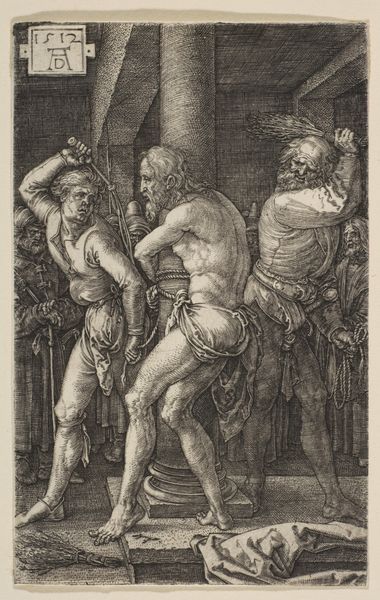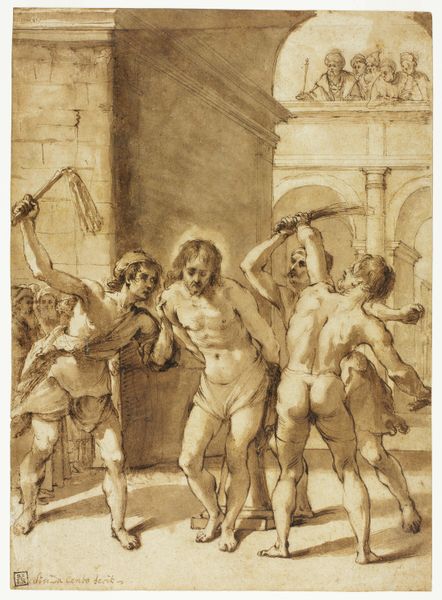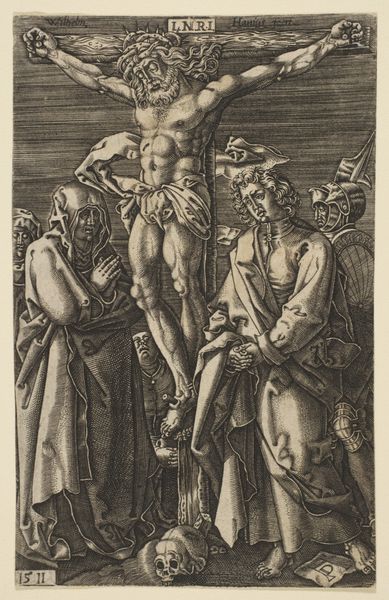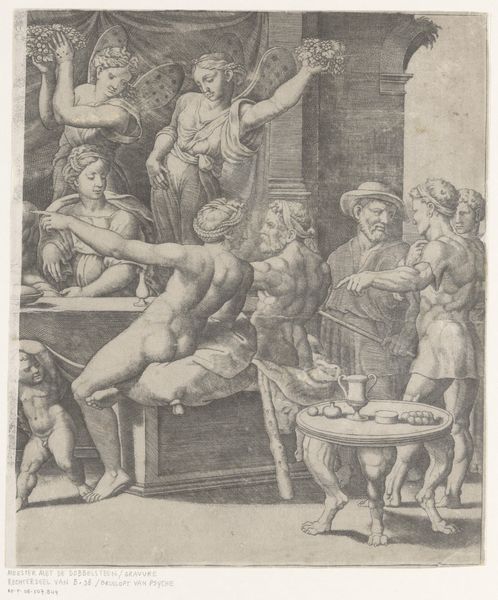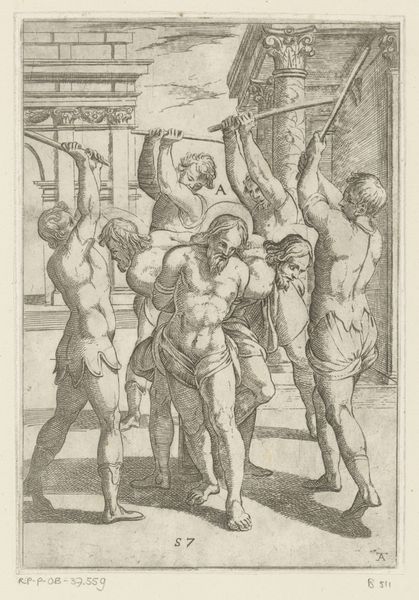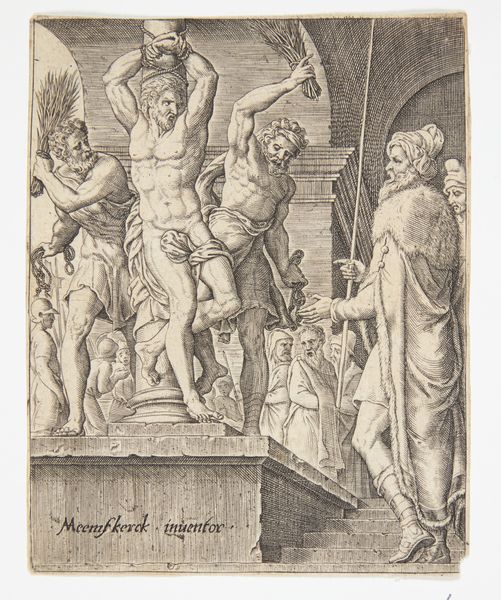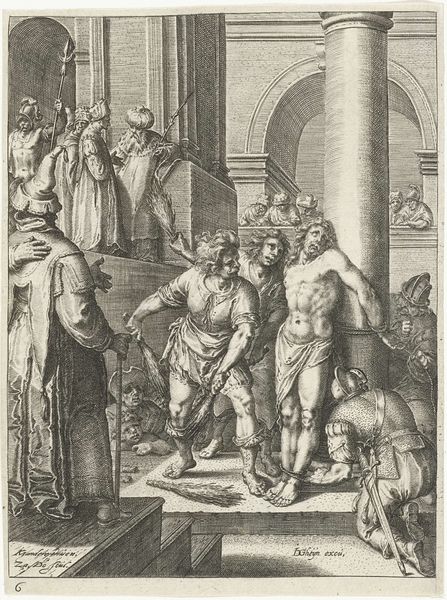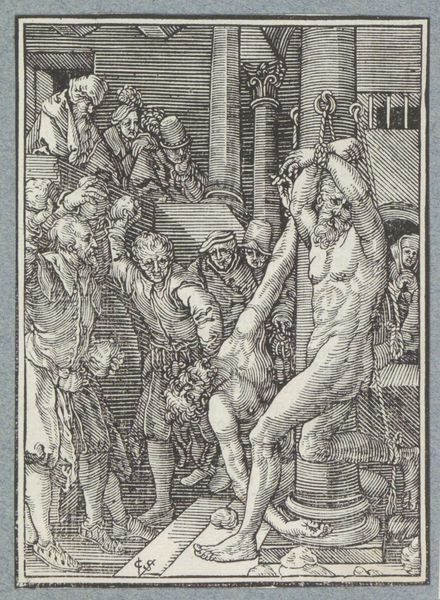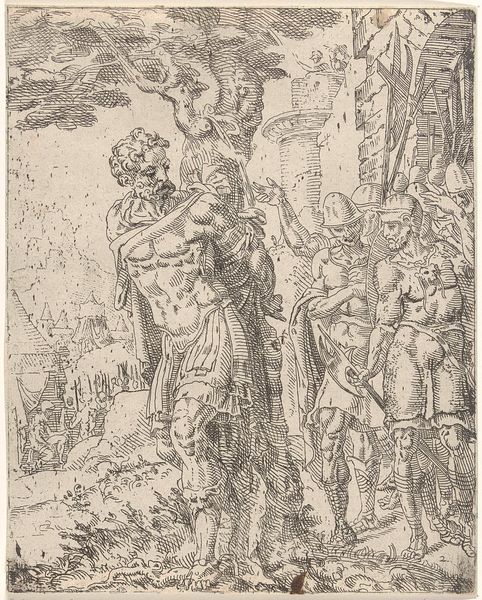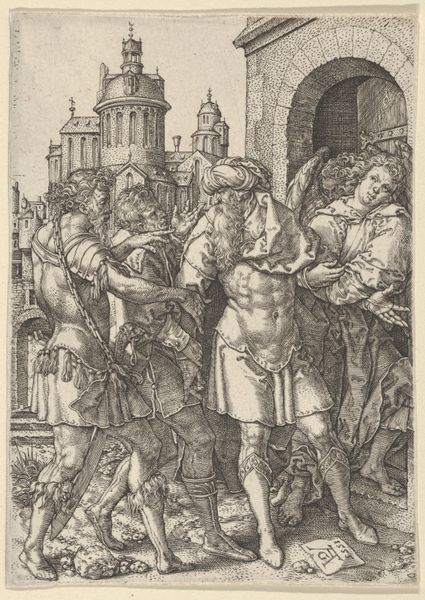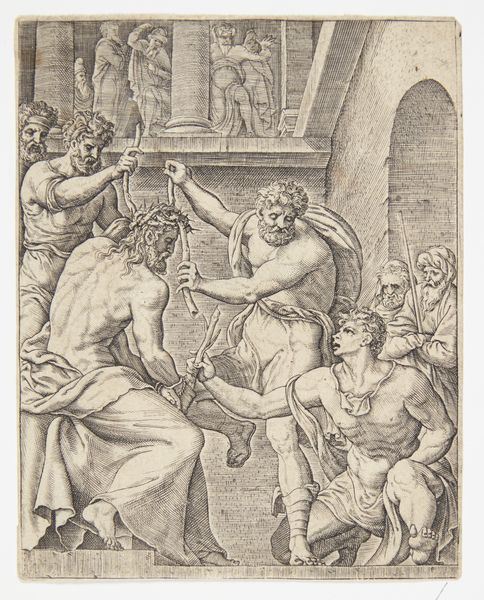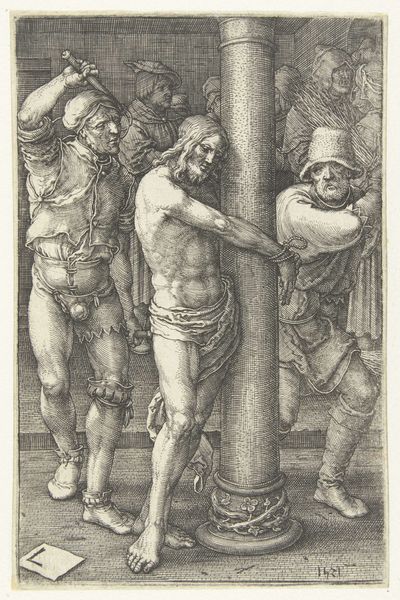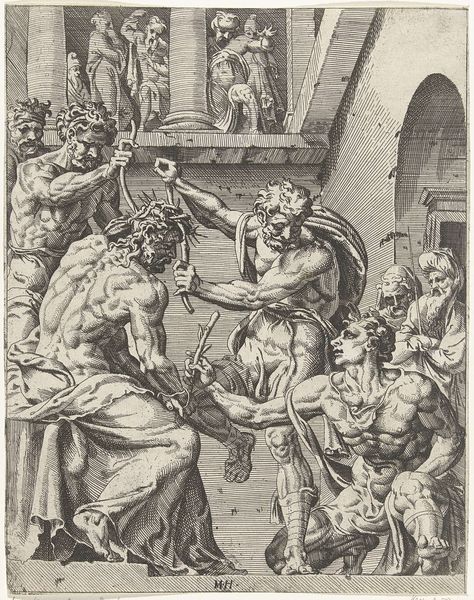
The Stoning of the Elders, from The Story of Susanna 1555
0:00
0:00
drawing, print, engraving
#
portrait
#
drawing
# print
#
figuration
#
11_renaissance
#
line
#
pen work
#
history-painting
#
nude
#
engraving
Dimensions: Sheet: 4 1/2 × 3 1/8 in. (11.4 × 8 cm)
Copyright: Public Domain
Curator: Aldegrever’s 1555 engraving, “The Stoning of the Elders, from The Story of Susanna,” presents a grim scene. The lines are so fine, creating an image packed with detail, currently held at the Metropolitan Museum of Art. What is your immediate reaction to this piece? Editor: An uncomfortable immediacy, frankly. The textures and the clear cruelty conveyed are hard to ignore. It really punches through the centuries. I'm curious about the staging. Curator: Aldegrever stages this scene almost like a play within the print. The architecture seems to form a sort of theatre box. I'd suggest that it deliberately mirrors the very public role of religious justice in the 16th century. Editor: Yes, there’s something distinctly symbolic about this architectural division of spectators and the condemned. It echoes throughout the Old Testament--this visual language for purity, punishment and power, played out as public theatre. Note the dangling men--the elders, clearly subjected to physical abuse before the final act. Curator: The original biblical story of Susanna involves the elders falsely accusing her of adultery after she refuses their advances. The prophet Daniel proves her innocence, leading to the elders' punishment. Aldegrever highlights the political undertones present at that time. This would act as a caution for those in power. Editor: And the stones. Each one deliberately placed as a symbol of collective condemnation and communal participation in this drama. Their eyes... notice how varied the expressions are, from the engaged executioners to the detached observers. Is he attempting to give commentary on the individual versus the group? Curator: It’s very possible. The visual weight Aldegrever gives to both the action and the audience does hint at a certain socio-political criticism. It seems this artwork acted as both religious history lesson and cultural commentary. Editor: Exactly. Aldegrever uses an ancient biblical tale to create commentary on legal structures and popular sovereignty during his time. Powerful indeed. Curator: This engraving allows us to connect the complex threads between morality, justice, and public accountability, all under scrutiny in a Renaissance court and still resonant today.
Comments
No comments
Be the first to comment and join the conversation on the ultimate creative platform.
